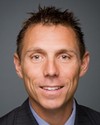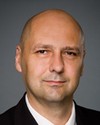I think there are a couple of things we've learned from other countries. Number one is, I'm not sure we've had what you might call the magic carrots. The U.K. system was built on the fact that there was terrible inefficiency in having to refill prescriptions every 30 days. They started off by getting every U.K. physician on board—making it so it was easy to renew prescriptions online through a computerized system. It saves them a heck of a lot of time. We didn't really have those kinds of magic carrots in our plan, so that the end-user said “we need this, we need this”, and they pushed the envelope on adoption.
Another approach was used in New Zealand, and they were being pushed by the end-users to make it happen. We didn't quite take that approach. We didn't invest in the end-user. I think Canada is now doing that. Canada Health Infoway is now doing that, investing in the end-user to hook up to what will be very interesting pooled data on drugs and labs and imaging. These are the kinds of things that you don't want to repeat over and over again. They're critical for health care, and they will drive efficiency if we get people hooked up.
We have neglected the fact that in other systems, particularly the U.S., the consumers drove the system. They drove it by saying, “I want to have access to my labs”, and there are certain other things they want to have. They want to be able to book appointments online. They want to be able to do these kinds of things. If we were to go that route—we can steer the ship in a slightly different direction and get it going on that route—it would drive demand in a big way and empower consumers. We really should go down that pathway.




